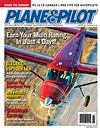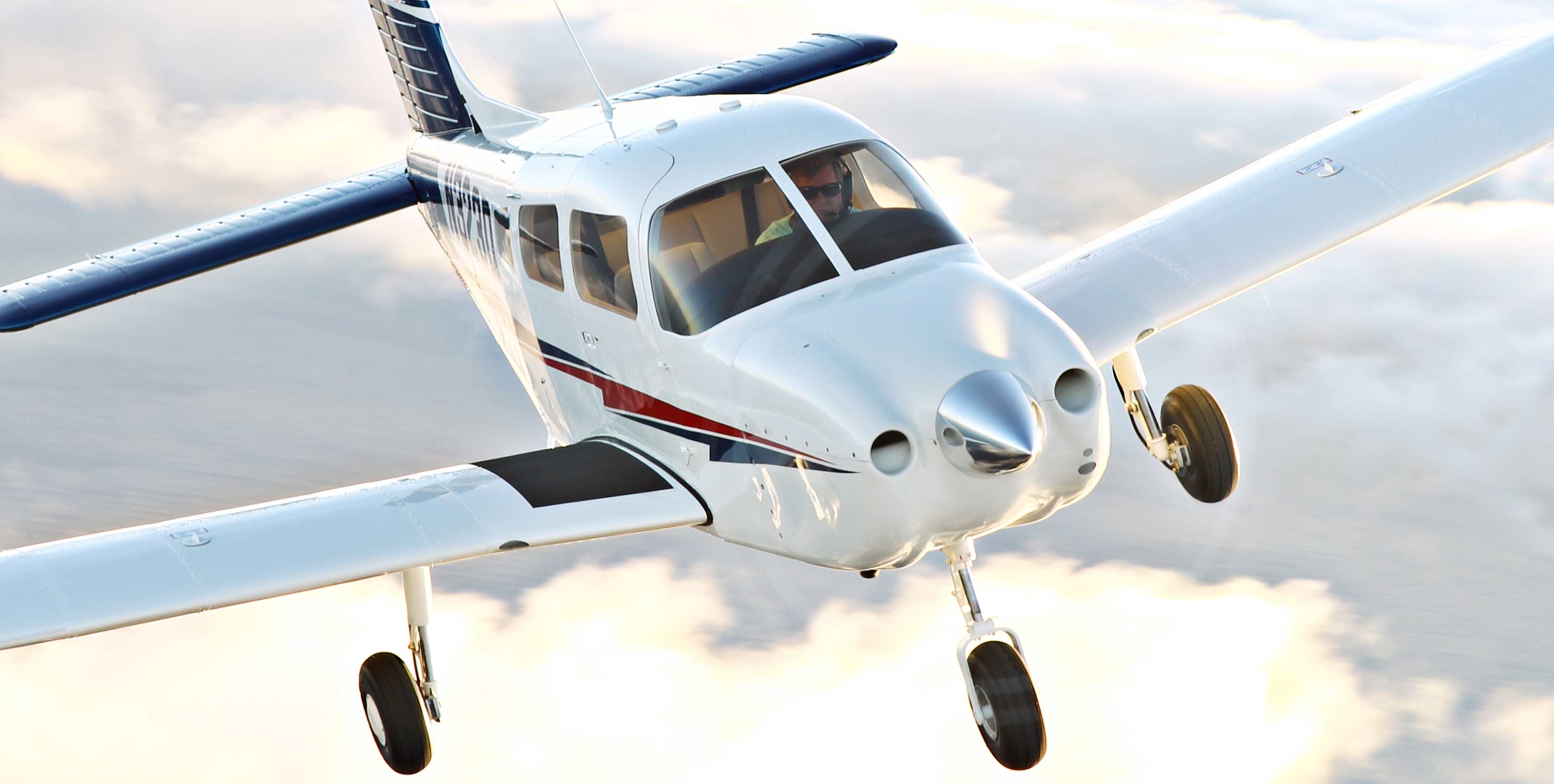Earn Your Multi-Engine Rating ATP's Nationwide Centers Offer Top-Notch Ab Initio Training
"Mixtures, props, throttles," I repeated to myself on the drive from Phoenix-Mesa Gateway Airport to the Doubletree hotel. "Flaps up, gear up. Identify, verify." It was, indeed, a dead left engine as my "dead" left foot indicated in the imaginary scenario. This mental simulation was something I'd repeat over and over, each time striving to be quicker and more confident. But, I had just finished my second day of multi-engine training and was starting to show signs of pre-checkride jitters.
The previous day of training had gone great. The Piper Seminole was easy to handle. Garmin G500 avionics made life simple. Steep turns were fun, stalls were a non-event, and the twin landed nicely—I had this! But today, I wasn't quite so sure. Systems, V-speeds and emergency checklists swirled in my head. Critical engines, VMC demos—things I wasn't used to as a single-engine pilot were interesting, but also overwhelming.
With only two more days until my checkride, I needed to study during every spare second. Back in my hotel room, I settled in with training guides, notebooks and coffee. I "chair flew" countless VMC demos. Slow to 100 knots. Close the left throttle. Increase the right throttle slowly to full. Maintain directional control. Rudder! Pitch up through Blueline. First indication of stall—recover. It sounds easy on paper, and it wasn't too bad on the couch, but would I be able to demonstrate the maneuver to an FAA examiner in just two days?
My instructor, Pat Williams, had encouraged me to send a text if I had questions while studying. And, I did.
"In what situation would you want to use X-FEED?" "What is the micros-witch on the nose gear for?" "How do you prevent a heater overtemp?" Williams always replied promptly with a clear answer. But as the hours went on, a mild panic set in.
"My brain hurts," was my final text to Williams for the evening. His reply: "That's a good sign!"
Immersion Training
With 36 flight centers nationwide, ATP Flight School is the largest flight academy in the country. The school offers immersion training in a disciplined, airline-style crew environment. This year, ATP has helped place more than 300 of its graduates with regional carriers. A successful track record with airlines has earned it the well-deserved reputation of being a top accelerated flight academy.
While ATP excels at launching students on a professional career path, it also offers many training options for private pilots. The course selection ranges from a one-day instrument proficiency check to a 15-day accelerated instrument rating program. Each program is based on a fixed rate, so students know exactly what to expect for the total cost of their training. With a set schedule, they also know exactly how long it will take. Students in the Airline Career Pilot Program are offered a housing option of a shared bedroom in a furnished apartment for $200 per week.
I had enrolled in ATP's four-day multi-engine rating course, which includes up to 10 hours in a 2012 Piper Seminole. To accommodate the accelerated pace, students are provided with study materials that they should review prior to arrival. The study guides are in a consolidated format that focuses on the most pertinent information for a student's training.
My packet contained a Seminole supplement that covered twin aerodynamics, aircraft systems, checkride maneuvers and sample oral questions. I was also provided with Seminole checklists and instructions on which ones to commit to memory. Additional training tools for students include an iPad app and a downloadable audio file.
Phoenix-Mesa Gateway
The expansive 19,000-square-foot facility at Mesa Gateway is one of ATP's newer locations. A long corridor leads from the instructor check-in area, where instructors greet students and use an online scheduling system, to the Flight Ops Support desk. This desk is staffed seven days a week with full- and part-time personnel who have aviation experience and are pursuing a career within an aviation field. On the wall is a large screen that displays the current status for all air-craft, instructors and students. It also lists any pending checkrides and airplanes out for maintenance.
There are two large classrooms; one accommodates up to 16 students and is used primarily for student-pilot ground instruction. Five smaller briefing rooms are designed to provide a better training experience for a student and an instructor without any distractions. Each has a whiteboard, instructional tools such as cockpit cutouts and ample desk space. Two dedicated FAA briefing rooms are used exclusively for oral exams for checkride applicants.
When not in class, students have the option of studying on their own at a personal cubicle in a library-type environment. They can keep their own schedule and will always have a reserved spot for quiet study.
A side door connects the main building to a pristine maintenance shop. There, a team of seven maintenance technicians work on routine fleet maintenance and scheduled inspections. "One of the great benefits of our location is the on-site maintenance facility," says manager Justin Ratliff. "It ensures that a student's training will never be interrupted because there's always a replacement part or another airplane available, if needed."
On a daily basis, Ratliff oversees 22 instructors and, on average, 30 accelerated program students. The location's fleet includes 30 Cessna 172s and Piper Seminoles and a CRJ-200 flight training device. There are also two Frasca TruFlites modeled after the PA44, and an Advanced Aviation Training Device (AATD) made by Precision Flight Controls that has single-engine and multi-engine interchangeability.
Before a flight, students can relax in plush seats facing huge glass windows that overlook the ramp. During summer months, it's a good place to get a last gulp of air-conditioning before stepping out into the Arizona swelter.
The airport itself is massive, which makes for a great training environment. Three parallel runways range from 9,300 to 10,400 feet in length. The school is in the northwest corner of the field, near the departure end of runway 12R. In the calm air of early mornings, runway 12 is normally active. When the winds pick up midday, the traffic flow is often switched to runway 30.
It's not unusual to see ongoing military activity. During one of my training flights, there was a C-130 Hercules making left traffic patterns for 12L while we were making right patterns for 12R. Down the ramp from ATP, Aviation Performance Solutions offers upset recovery and aerobatic training in a fleet of Extra 300s. Commercial airline service to Mesa Gateway is provided by Allegiant Air and Spirit Airlines.
From One To Two Engines
Over four days, Williams and I did around nine hours of ground school. We'd review my study materials and then he'd ask me questions. Some topics were more challenging than others, and when I botched the answers, I wished I had studied more before arriving at the school.
The more I learned about multi-engine flying, the more I started to appreciate my previous life as a single-engine pilot. Two engines meant a higher workload and more complex systems. We covered aerodynamic effects of an engine failure. The Seminole's right engine, a 180 hp Lycoming LO-360, has a counter-rotating propeller, so the airplane doesn't have a critical engine, but we studied the theory. "A large part of multi-engine training focuses on what to do if you have an engine failure," said Williams. "You need to be prepared to react immediately."
Like most other ATP instructors, Williams had previously been an ATP student. He had earned his private license back home in Southern California, and as a 120-hour student, he enrolled in ATP's fast-track Airline Career Pilot Program to complete all of his ratings. After graduating, he took an instructor job at ATP.
In total, we logged 8.1 hours in the Seminole. Seven practice approaches, 14 landings. As we climbed into the airplane before each flight, Williams would check us into ATP's Flight Ops system via an SMS text messaging system. The school's organized and disciplined approach to training definitely simplifies student logistics.
Our final training flight was over two hours. We went through every maneuver, and in some cases, multiple times. It felt a bit brutal, as I pointed out to Williams. "I want you to be overprepared," he said. "This will make your checkride seem like a breeze."
I checked the forecast the night before my big day. Okay, I actually checked it about 30 times. The past afternoons had seen winds gusting up to 30 knots, and as a precaution, we had scheduled my checkride for 7 a.m.
ATP works with a set of DPEs. My examiner was Duncan Hastie, who owns Jet Safety International, a pilot training and aviation consulting business at Scottsdale Airport. We met in one of the designated checkride rooms. I was nervous, but Hastie put me at ease with his illustrious Scottish accent and array of flying stories. Among other career achievements, he had served as an advisor on the Harrier VSTOL aircraft to the British Royal Air Force and the U.S. Marine Corps.
As Williams had assured, the checkride—both oral and flight—was over before I knew it. After a single-engine ILS approach to runway 05 at nearby Casa Grande Municipal Airport, Hastie informed me that I was now a multi-engine rated pilot. Drenched in sweat, but multi-engine rated, nonetheless. It was an accomplishment I was proud of, and the rating represented a new "license to learn."
It turned out that my big day was also a big day for my instructor. I was to be his last student at ATP, after one year of his instructing there. The DPE's signature in my logbook—the last checkride Williams would send a student on—symbolized a milestone for Williams, as well. With 1,500 hours under his belt, including 1,300 dual given, he was ready for a pro career. He accepted a job with Shuttle America and moved to St. Louis for training classes. Just a few months have passed since then, and he's now based at New York City's LaGuardia airport flying reserve on Embraer E170s and E175s. He's a prime example of a successful ATP path, moving from private instructor to real-world job placement.



